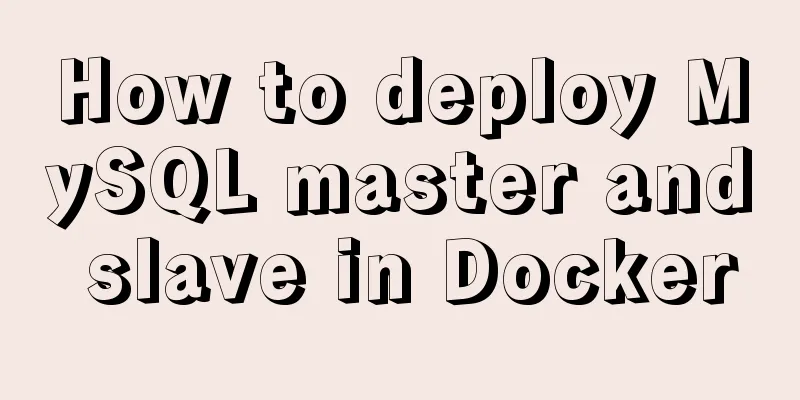Analysis of the principle of Mybatis mapper dynamic proxy

|
Preface Before we start explaining the principle of dynamic proxy, let's first look at the two implementation methods of the dao layer after integrating mybatis, which is not using dynamic proxy and using dynamic proxy. By comparing our own implementation of the dao layer interface and the mybatis dynamic proxy, we can more intuitively show what mybatis dynamic proxy does for us, which is helpful for us to understand the process of dynamic proxy. After the explanation, we will analyze the principle of dynamic proxy. This explanation is based on the mybatis environment that has been built, and the basic user class writing and the declaration of the user class Dao interface have been implemented. The following is the interface code of the Dao layer
public interface UserDao {
/*
Query all user information*/
List<User> findAll();
/**
* Save user * @param user
*/
void save(User user);
/**
* Update user * @return
*/
void update(User user);
/**
* Delete user */
void delete(Integer userId);
/**
* Find a user * @param userId
* @return
*/
User findOne(Integer userId);
/**
* Fuzzy query based on name* @param name
* @return
*/
List<User> findByName(String name);
/**
* Fuzzy query based on combined objects* @param vo
* @return
*/
List<User> findByQueryVo(QueryVo vo);
} 1. Comparison of two implementation methods of Mybatis dao layer 1. The dao layer does not use dynamic proxy If the dao layer does not use dynamic proxy, we need to implement the interface of the dao layer ourselves. For simplicity, I only implemented the findAll method in the Dao interface. This method is used as an example to show how we implement Dao ourselves. Let's look at the code:
public class UserDaoImpl implements UserDao{
private SqlSessionFactory factory;
public UserDaoImpl(SqlSessionFactory factory){
this.factory = factory;
}
public List<User> findAll() {
//1. Get the sqlSession object SqlSession sqlSession = factory.openSession();
//2. Call the selectList method List<User> list = sqlSession.selectList("com.example.dao.UserDao.findAll");
//3. Close the stream sqlSession.close();
return list;
}
public void save(User user) {
}
public void update(User user) {
}
public void delete(Integer userId) {
}
public User findOne(Integer userId) {
return null;
}
public List<User> findByName(String name) {
return null;
}
public List<User> findByQueryVo(QueryVo vo) {
return null;
}The key code here is List<User> list = sqlSession.selectList("com.example.dao.UserDao.findAll"), which requires us to manually call the method in SqlSession. The final goal based on the dynamic proxy method is to successfully call here. Note: If you are adding, updating or deleting operations, you need to add transaction submission in the method. 2. The dao layer uses Mybatis's dynamic proxy If you use dynamic proxy, after the interface declaration of the Dao layer is completed, you only need to obtain the proxy object corresponding to the Dao interface through the getMapper method of the SqlSession object when using it. The key code is as follows: //3. Get the SqlSession object SqlSession session = factory.openSession(); //4. Get the proxy object of dao UserDao mapper = session.getMapper(UserDao.class); //5. Execute all query methods List<User> list = mapper.findAll(); After obtaining the proxy object of the dao layer, you can call the query method through the proxy object to realize the function of querying the list of all users. 2. Principle Analysis of Mybatis Dynamic Proxy Implementation The most important classes in dynamic proxy: SqlSession, MapperProxy, MapperMethod. Let's start the process analysis from the entry method to the end of the call. 1. Start of calling method: //4. Get the proxy object of dao UserDao mapper = session.getMapper(UserDao.class); Because SqlSesseion is an interface, we found through Debug mode that the implementation class used here is DefaultSqlSession. 2. Find the getMapper method in DeaultSqlSession and find that no other actions are taken here. The work is just thrown into the Configuration class. Configuration is a class, not an interface. You can directly enter the getMapper method of this class.
@Override
public <T> T getMapper(Class<T> type) {
return configuration.<T>getMapper(type, this);
}3. Find the getMapper method of the Configuration class . Here, the work is handed over to the getMapper method of MapperRegistry, so we continue to move forward.
public <T> T getMapper(Class<T> type, SqlSession sqlSession) {
return mapperRegistry.getMapper(type, sqlSession);
}4. Find the getMapper method of MapperRegistry . You can see that it is different from before. Through the naming method of MapperProxyFactory, we know that the proxy class of MapperProxy we are concerned about will be generated through this factory. Then we enter the newInstance method of MapperProxyFactory through mapperProxyFactory.newInstance(sqlSession);
public <T> T getMapper(Class<T> type, SqlSession sqlSession) {
final MapperProxyFactory<T> mapperProxyFactory = (MapperProxyFactory<T>) knownMappers.get(type);
if (mapperProxyFactory == null) {
throw new BindingException("Type " + type + " is not known to the MapperRegistry.");
}
try {
return mapperProxyFactory.newInstance(sqlSession);
} catch (Exception e) {
throw new BindingException("Error getting mapper instance. Cause: " + e, e);
}
}5. Find the newIntance method of MapperProxyFactory . From the parameter type SqlSession, we can know that the above call first enters the second newInstance method and creates the MapperProxy object we need to focus on. The second method then calls the first newInstance method and passes the MapperProxy object into it. The proxy class is created based on the object and returned. We have already got the required proxy class here, but we still have to look down to the MapperProxy class to see what our proxy class does.
protected T newInstance(MapperProxy<T> mapperProxy) {
return (T) Proxy.newProxyInstance(mapperInterface.getClassLoader(), new Class[] { mapperInterface }, mapperProxy);
}
public T newInstance(SqlSession sqlSession) {
final MapperProxy<T> mapperProxy = new MapperProxy<T>(sqlSession, mapperInterface, methodCache);
return newInstance(mapperProxy);
}6. Find the MapperProxy class and find that it does implement the InvocationHandler interface that the JDK dynamic proxy must implement, so we focus on the invoke() method. Here we see that the MapperMethod class is first obtained in the invoke method, and then mapperMethod.execute() is called, so we continue to look at the execute method of the MapperMethod class.
public class MapperProxy<T> implements InvocationHandler, Serializable {
private static final long serialVersionUID = -6424540398559729838L;
private final SqlSession sqlSession;
private final Class<T> mapperInterface;
private final Map<Method, MapperMethod> methodCache;
public MapperProxy(SqlSession sqlSession, Class<T> mapperInterface, Map<Method, MapperMethod> methodCache) {
this.sqlSession = sqlSession;
this.mapperInterface = mapperInterface;
this.methodCache = methodCache;
}
@Override
public Object invoke(Object proxy, Method method, Object[] args) throws Throwable {
try {
if (Object.class.equals(method.getDeclaringClass())) {
return method.invoke(this, args);
} else if (isDefaultMethod(method)) {
return invokeDefaultMethod(proxy, method, args);
}
} catch (Throwable t) {
throw ExceptionUtil.unwrapThrowable(t);
}
final MapperMethod mapperMethod = cachedMapperMethod(method);
return mapperMethod.execute(sqlSession, args);
}
private MapperMethod cachedMapperMethod(Method method) {
MapperMethod mapperMethod = methodCache.get(method);
if (mapperMethod == null) {
mapperMethod = new MapperMethod(mapperInterface, method, sqlSession.getConfiguration());
methodCache.put(method, mapperMethod);
}
return mapperMethod;
}
@UsesJava7
private Object invokeDefaultMethod(Object proxy, Method method, Object[] args)
throws Throwable {
final Constructor<MethodHandles.Lookup> constructor = MethodHandles.Lookup.class
.getDeclaredConstructor(Class.class, int.class);
if (!constructor.isAccessible()) {
constructor.setAccessible(true);
}
final Class<?> declaringClass = method.getDeclaringClass();
return constructor
.newInstance(declaringClass,
MethodHandles.Lookup.PRIVATE | MethodHandles.Lookup.PROTECTED
| MethodHandles.Lookup.PACKAGE | MethodHandles.Lookup.PUBLIC)
.unreflectSpecial(method, declaringClass).bindTo(proxy).invokeWithArguments(args);
}
/**
* Backport of java.lang.reflect.Method#isDefault()
*/
private boolean isDefaultMethod(Method method) {
return ((method.getModifiers()
& (Modifier.ABSTRACT | Modifier.PUBLIC | Modifier.STATIC)) == Modifier.PUBLIC)
&& method.getDeclaringClass().isInterface();
}
}7. Find the execute method of the MapperMethod class and find that execute obtains and encapsulates the return results by calling other methods in this class. Let's take a look at the entire MapperMethod class.
public Object execute(SqlSession sqlSession, Object[] args) {
Object result;
switch (command.getType()) {
case INSERT: {
Object param = method.convertArgsToSqlCommandParam(args);
result = rowCountResult(sqlSession.insert(command.getName(), param));
break;
}
case UPDATE: {
Object param = method.convertArgsToSqlCommandParam(args);
result = rowCountResult(sqlSession.update(command.getName(), param));
break;
}
case DELETE: {
Object param = method.convertArgsToSqlCommandParam(args);
result = rowCountResult(sqlSession.delete(command.getName(), param));
break;
}
case SELECT:
if (method.returnsVoid() && method.hasResultHandler()) {
executeWithResultHandler(sqlSession, args);
result = null;
} else if (method.returnsMany()) {
result = executeForMany(sqlSession, args);
} else if (method.returnsMap()) {
result = executeForMap(sqlSession, args);
} else if (method.returnsCursor()) {
result = executeForCursor(sqlSession, args);
} else {
Object param = method.convertArgsToSqlCommandParam(args);
result = sqlSession.selectOne(command.getName(), param);
}
break;
case FLUSH:
result = sqlSession.flushStatements();
break;
default:
throw new BindingException("Unknown execution method for: " + command.getName());
}
if (result == null && method.getReturnType().isPrimitive() && !method.returnsVoid()) {
throw new BindingException("Mapper method '" + command.getName()
+ " attempted to return null from a method with a primitive return type (" + method.getReturnType() + ").");
}
return result;
}8. The MapperMethod class is the core class of the entire proxy mechanism , which encapsulates and uses the operations in SqlSession. There are two inner classes in this class: SqlCommand and MethodSignature. SqlCommand is used to encapsulate CRUD operations, which are the nodes of the operations we configured in xml. Each node generates a MappedStatement class. MethodSignature is used to encapsulate the parameters and return type of the method. In the execute method, we find that we are back to the interface call in SqlSession. This is the same as the way we implement the UerDao interface by directly using the SqlSession object to call the implementation class of DefaultSqlSession. After a large circle of proxy, we return to the original place. This is the implementation process of the entire dynamic proxy.
public class MapperMethod {
private final SqlCommand command;
private final MethodSignature method;
public MapperMethod(Class<?> mapperInterface, Method method, Configuration config) {
this.command = new SqlCommand(config, mapperInterface, method);
this.method = new MethodSignature(config, mapperInterface, method);
}
public Object execute(SqlSession sqlSession, Object[] args) {
Object result;
switch (command.getType()) {
case INSERT: {
Object param = method.convertArgsToSqlCommandParam(args);
result = rowCountResult(sqlSession.insert(command.getName(), param));
break;
}
case UPDATE: {
Object param = method.convertArgsToSqlCommandParam(args);
result = rowCountResult(sqlSession.update(command.getName(), param));
break;
}
case DELETE: {
Object param = method.convertArgsToSqlCommandParam(args);
result = rowCountResult(sqlSession.delete(command.getName(), param));
break;
}
case SELECT:
if (method.returnsVoid() && method.hasResultHandler()) {
executeWithResultHandler(sqlSession, args);
result = null;
} else if (method.returnsMany()) {
result = executeForMany(sqlSession, args);
} else if (method.returnsMap()) {
result = executeForMap(sqlSession, args);
} else if (method.returnsCursor()) {
result = executeForCursor(sqlSession, args);
} else {
Object param = method.convertArgsToSqlCommandParam(args);
result = sqlSession.selectOne(command.getName(), param);
}
break;
case FLUSH:
result = sqlSession.flushStatements();
break;
default:
throw new BindingException("Unknown execution method for: " + command.getName());
}
if (result == null && method.getReturnType().isPrimitive() && !method.returnsVoid()) {
throw new BindingException("Mapper method '" + command.getName()
+ " attempted to return null from a method with a primitive return type (" + method.getReturnType() + ").");
}
return result;
}
private Object rowCountResult(int rowCount) {
final Object result;
if (method.returnsVoid()) {
result = null;
} else if (Integer.class.equals(method.getReturnType()) || Integer.TYPE.equals(method.getReturnType())) {
result = rowCount;
} else if (Long.class.equals(method.getReturnType()) || Long.TYPE.equals(method.getReturnType())) {
result = (long)rowCount;
} else if (Boolean.class.equals(method.getReturnType()) || Boolean.TYPE.equals(method.getReturnType())) {
result = rowCount > 0;
} else {
throw new BindingException("Mapper method '" + command.getName() + "' has an unsupported return type: " + method.getReturnType());
}
return result;
}
private void executeWithResultHandler(SqlSession sqlSession, Object[] args) {
MappedStatement ms = sqlSession.getConfiguration().getMappedStatement(command.getName());
if (void.class.equals(ms.getResultMaps().get(0).getType())) {
throw new BindingException("method " + command.getName()
+ " needs either a @ResultMap annotation, a @ResultType annotation,"
+ " or a resultType attribute in XML so a ResultHandler can be used as a parameter.");
}
Object param = method.convertArgsToSqlCommandParam(args);
if (method.hasRowBounds()) {
RowBounds rowBounds = method.extractRowBounds(args);
sqlSession.select(command.getName(), param, rowBounds, method.extractResultHandler(args));
} else {
sqlSession.select(command.getName(), param, method.extractResultHandler(args));
}
}
private <E> Object executeForMany(SqlSession sqlSession, Object[] args) {
List<E> result;
Object param = method.convertArgsToSqlCommandParam(args);
if (method.hasRowBounds()) {
RowBounds rowBounds = method.extractRowBounds(args);
result = sqlSession.<E>selectList(command.getName(), param, rowBounds);
} else {
result = sqlSession.<E>selectList(command.getName(), param);
}
// issue #510 Collections & arrays support
if (!method.getReturnType().isAssignableFrom(result.getClass())) {
if (method.getReturnType().isArray()) {
return convertToArray(result);
} else {
return convertToDeclaredCollection(sqlSession.getConfiguration(), result);
}
}
return result;
}
private <T> Cursor<T> executeForCursor(SqlSession sqlSession, Object[] args) {
Cursor<T> result;
Object param = method.convertArgsToSqlCommandParam(args);
if (method.hasRowBounds()) {
RowBounds rowBounds = method.extractRowBounds(args);
result = sqlSession.<T>selectCursor(command.getName(), param, rowBounds);
} else {
result = sqlSession.<T>selectCursor(command.getName(), param);
}
return result;
}
private <E> Object convertToDeclaredCollection(Configuration config, List<E> list) {
Object collection = config.getObjectFactory().create(method.getReturnType());
MetaObject metaObject = config.newMetaObject(collection);
metaObject.addAll(list);
return collection;
}
@SuppressWarnings("unchecked")
private <E> Object convertToArray(List<E> list) {
Class<?> arrayComponentType = method.getReturnType().getComponentType();
Object array = Array.newInstance(arrayComponentType, list.size());
if (arrayComponentType.isPrimitive()) {
for (int i = 0; i < list.size(); i++) {
Array.set(array, i, list.get(i));
}
return array;
} else {
return list.toArray((E[])array);
}
}
private <K, V> Map<K, V> executeForMap(SqlSession sqlSession, Object[] args) {
Map<K, V> result;
Object param = method.convertArgsToSqlCommandParam(args);
if (method.hasRowBounds()) {
RowBounds rowBounds = method.extractRowBounds(args);
result = sqlSession.<K, V>selectMap(command.getName(), param, method.getMapKey(), rowBounds);
} else {
result = sqlSession.<K, V>selectMap(command.getName(), param, method.getMapKey());
}
return result;
}
public static class ParamMap<V> extends HashMap<String, V> {
private static final long serialVersionUID = -2212268410512043556L;
@Override
public V get(Object key) {
if (!super.containsKey(key)) {
throw new BindingException("Parameter '" + key + "' not found. Available parameters are " + keySet());
}
return super.get(key);
}
}
public static class SqlCommand {
private final String name;
private final SqlCommandType type;
public SqlCommand(Configuration configuration, Class<?> mapperInterface, Method method) {
final String methodName = method.getName();
final Class<?> declaringClass = method.getDeclaringClass();
MappedStatement ms = resolveMappedStatement(mapperInterface, methodName, declaringClass,
configuration);
if (ms == null) {
if (method.getAnnotation(Flush.class) != null) {
name = null;
type = SqlCommandType.FLUSH;
} else {
throw new BindingException("Invalid bound statement (not found): "
+ mapperInterface.getName() + "." + methodName);
}
} else {
name = ms.getId();
type = ms.getSqlCommandType();
if (type == SqlCommandType.UNKNOWN) {
throw new BindingException("Unknown execution method for: " + name);
}
}
}
public String getName() {
return name;
}
public SqlCommandType getType() {
return type;
}
private MappedStatement resolveMappedStatement(Class<?> mapperInterface, String methodName,
Class<?> declaringClass, Configuration configuration) {
String statementId = mapperInterface.getName() + "." + methodName;
if (configuration.hasStatement(statementId)) {
return configuration.getMappedStatement(statementId);
} else if (mapperInterface.equals(declaringClass)) {
return null;
}
for (Class<?> superInterface : mapperInterface.getInterfaces()) {
if (declaringClass.isAssignableFrom(superInterface)) {
MappedStatement ms = resolveMappedStatement(superInterface, methodName,
declaringClass, configuration);
if (ms != null) {
return ms;
}
}
}
return null;
}
}
public static class MethodSignature {
private final boolean returnsMany;
private final boolean returnsMap;
private final boolean returnsVoid;
private final boolean returnsCursor;
private final Class<?> returnType;
private final String mapKey;
private final Integer resultHandlerIndex;
private final Integer rowBoundsIndex;
private final ParamNameResolver paramNameResolver;
public MethodSignature(Configuration configuration, Class<?> mapperInterface, Method method) {
Type resolvedReturnType = TypeParameterResolver.resolveReturnType(method, mapperInterface);
if (resolvedReturnType instanceof Class<?>) {
this.returnType = (Class<?>) resolvedReturnType;
} else if (resolvedReturnType instanceof ParameterizedType) {
this.returnType = (Class<?>) ((ParameterizedType) resolvedReturnType).getRawType();
} else {
this.returnType = method.getReturnType();
}
this.returnsVoid = void.class.equals(this.returnType);
this.returnsMany = (configuration.getObjectFactory().isCollection(this.returnType) || this.returnType.isArray());
this.returnsCursor = Cursor.class.equals(this.returnType);
this.mapKey = getMapKey(method);
this.returnsMap = (this.mapKey != null);
this.rowBoundsIndex = getUniqueParamIndex(method, RowBounds.class);
this.resultHandlerIndex = getUniqueParamIndex(method, ResultHandler.class);
this.paramNameResolver = new ParamNameResolver(configuration, method);
}
public Object convertArgsToSqlCommandParam(Object[] args) {
return paramNameResolver.getNamedParams(args);
}
public boolean hasRowBounds() {
return rowBoundsIndex != null;
}
public RowBounds extractRowBounds(Object[] args) {
return hasRowBounds() ? (RowBounds) args[rowBoundsIndex] : null;
}
public boolean hasResultHandler() {
return resultHandlerIndex != null;
}
public ResultHandler extractResultHandler(Object[] args) {
return hasResultHandler() ? (ResultHandler) args[resultHandlerIndex] : null;
}
public String getMapKey() {
return mapKey;
}
public Class<?> getReturnType() {
return returnType;
}
public boolean returnsMany() {
return returnsMany;
}
public boolean returnsMap() {
return returnsMap;
}
public boolean returnsVoid() {
return returnsVoid;
}
public boolean returnsCursor() {
return returnsCursor;
}
private Integer getUniqueParamIndex(Method method, Class<?> paramType) {
Integer index = null;
final Class<?>[] argTypes = method.getParameterTypes();
for (int i = 0; i < argTypes.length; i++) {
if (paramType.isAssignableFrom(argTypes[i])) {
if (index == null) {
index = i;
} else {
throw new BindingException(method.getName() + " cannot have multiple " + paramType.getSimpleName() + " parameters");
}
}
}
return index;
}
private String getMapKey(Method method) {
String mapKey = null;
if (Map.class.isAssignableFrom(method.getReturnType())) {
final MapKey mapKeyAnnotation = method.getAnnotation(MapKey.class);
if (mapKeyAnnotation != null) {
mapKey = mapKeyAnnotation.value();
}
}
return mapKey;
}
}The above is the full content of this article. I hope it will be helpful for everyone’s study. I also hope that everyone will support 123WORDPRESS.COM. You may also be interested in:
|
<<: CentOS 7 builds hadoop 2.10 high availability (HA)
>>: Vue3.0 implements the magnifying glass effect case study
Recommend
jQuery implements the mouse drag image function
This example uses jQuery to implement a mouse dra...
Next.js Getting Started Tutorial
Table of contents Introduction Create a Next.js p...
CSS3 property line-clamp controls the use of text lines
Description: Limit the number of lines of text di...
Detailed installation and use of docker-compose
Docker Compose is a Docker tool for defining and ...
A brief analysis of the configuration items of the Angular CLI release path
Preface Project release always requires packaging...
Detailed explanation of permission management commands in Linux (chmod/chown/chgrp/unmask)
Table of contents chmod Example Special attention...
Summary of practical methods for JS beginners to process arrays
join() method: connects all elements in an array ...
js canvas implements verification code and obtains verification code function
This article example shares the specific code of ...
How to use sed command to efficiently delete specific lines of a file
Preface Normally, if we want to delete certain li...
An article to quickly understand Angular and Ionic life cycle and hook functions
Table of contents Angular accomplish Calling orde...
How does Vue download non-same-origin files based on URL
Generally speaking, we can have the following two...
Parameters to make iframe transparent
<iframe src="./ads_top_tian.html" all...
Mysql modify stored procedure related permissions issue
When using MySQL database, you often encounter su...
Centering the Form in HTML
I once encountered an assignment where I was give...
MySQL uses init-connect to increase the implementation of access audit function
The mysql connection must first be initialized th...









